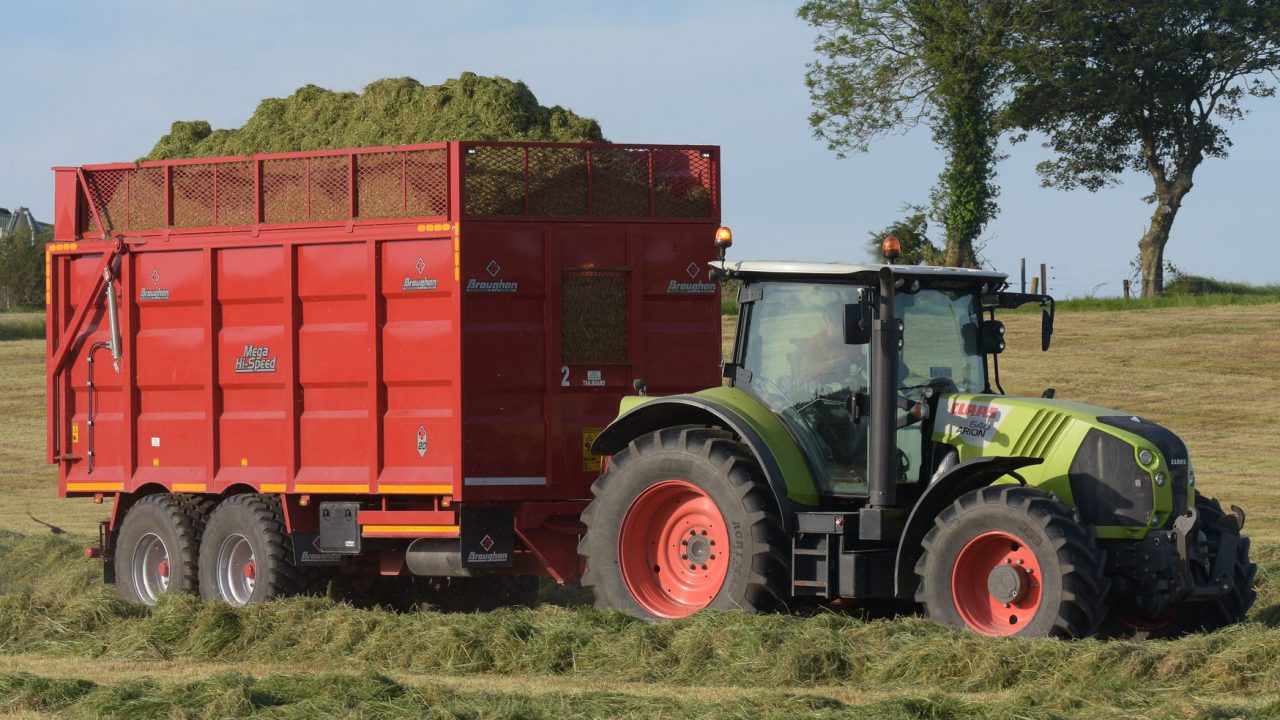The preparation for first-cut silage is beginning on some farms. It is important that, with the rising costs of getting the grass into the pit or baled, the quality of silage produced is of appropriate value for money.
We are now at the stage where we should be applying fertiliser and getting our slurry out, in preparation for the silage growing season.
The target for all farmers should be to make 75% DMD (Dry Matter Digestibility) silage this summer.
The closer the DMD figure can get to 75%, the better silage utilisation, and ultimately this will lead to better weight-gains from your cattle.
This should in turn reduce the necessity of buying high levels of concentrates during the winter.
This is a bonus for autumn calving herds, and where young developing stock are kept over the winter months.
This week, Shane Devaney from Teagasc has provided advice for those farming on heavy soils, and he lists the benefits of making good quality silage.
Get your timing right for quality silage
In his point about achieving 75% DMD silage, Shane stated that farmers need to target a cutting date of approximately May 20. Each one-week delay in cutting after this date results in a 2-3% drop in DMD.
Adding to this, it is important to graze-off silage ground in the springtime in order to remove any poor quality grass after the long winter period – which can reduce silage DMD by up to between 5-7%.
Fertiliser application
In the application of fertiliser to grassland, Shane advised:
“Apply 3,000 gallons of cattle slurry to the acre – which is a good source of nitrogen (N), phosphorus (P) and potash (K). By using a trailing shoe or a dribble bar you will get an extra three units of nitrogen/1,000 gallons of slurry applied.
“Seven to 10 days later apply a compound fertiliser or straight nitrogen of between 50-60 units/ac.”

Making quality silage on heavy soils
Reflecting on the issues of making silage on heavier farms, he mentioned that achieving the targets set above can be tricky on heavier farms – as it is not always possible to graze-off silage ground, or get slurry out before closing up silage ground.
He advised in areas like this, to go with three bags per acre of a product like 10.10.20 or 18.6.12, and top it up with CAN (Calcium Ammonium Nitrate) or protected urea to bring the units of N up to approximately 75-80 units.
On recently reseeded ground you can apply up to 100 units of nitrogen. If there are soil sample results available, these are useful to see the levels of N and P which are allowed under nitrates.
Get value for money
In his concluding piece of advice for farmers, Shane stated:
“Before you plan to get ready to make your silage this summer remember the cost of making good quality silage is no more expensive than it is to make silage of lesser quality – with big savings on meal bills over the winter housing period.”
